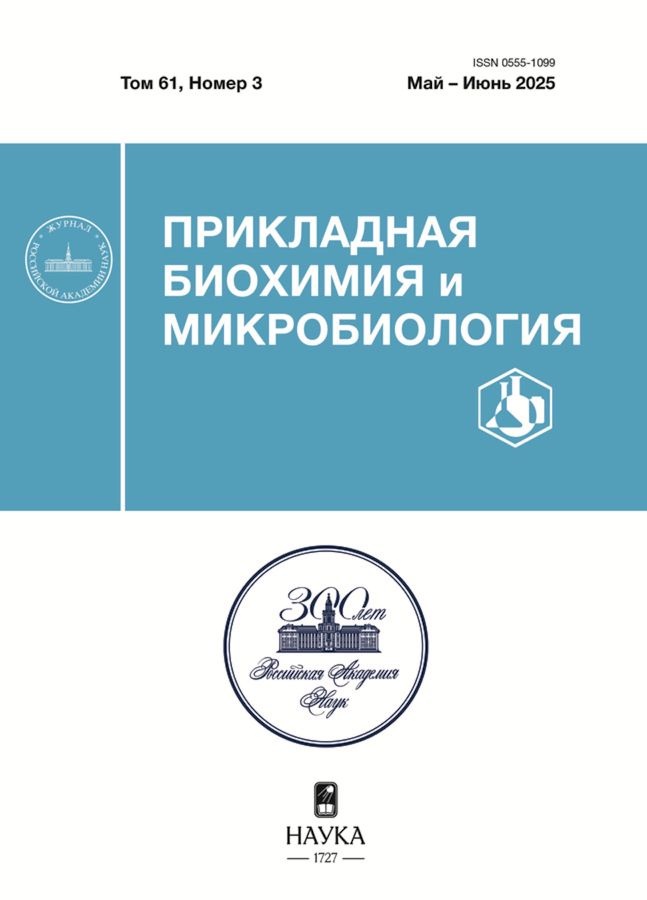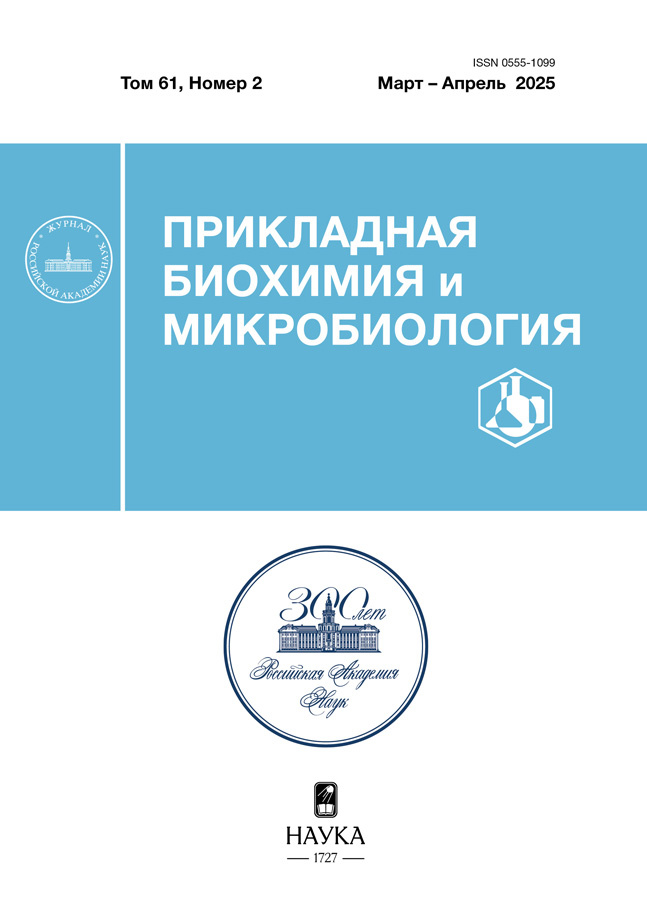Росторегулирующая активность брассиностероидов при совместном использовании их с феруловой кислотой на растениях яровой пшеницы
- Авторы: Литвиновская Р.П.1, Манжелесова Н.Е.1, Савчук А.Л.1, Денисюк Д.В.1, Бруй И.Г.2, Хрипач В.А.1
-
Учреждения:
- Институт биоорганической химии Национальной академии наук Беларуси
- Национальная академия наук Беларуси по земледелию
- Выпуск: Том 61, № 2 (2025)
- Страницы: 172-184
- Раздел: Статьи
- URL: https://genescells.com/0555-1099/article/view/687467
- DOI: https://doi.org/10.31857/S0555109925020076
- EDN: https://elibrary.ru/EOPQUB
- ID: 687467
Цитировать
Полный текст
Аннотация
Изучено влияние на ростовые, морфообразовательные, физиолого-биохимические процессы и зерновую продуктивность яровой пшеницы (Triticum aestivum L.) стероидных фитогормонов (24-эпибрассинолида и 24-эпикастастерона), феруловой кислоты и их смесей на всех этапах онтогенеза. Соединения и их смеси протестированы в лабораторных и полевых условиях. Изучена динамика изменения содержания стероидных фитогормонов на ранних этапах развития растений. Показано, что обработка растений путем опрыскивания брассиностероидами или феруловой кислотой приводила к активации процессов роста, продуктивности формообразования и репродукции, увеличению уровня эндогенных брассиностероидов, свободно-радикального окисления и пигментов. Совместное применение брассиностероидов и феруловой кислоты (в эквимолярном соотношении) увеличивало эффективность их действия, проявляя синергическое взаимодействие при стимуляции ростовых и метаболических процессов, приводя к увеличению урожайности, а также улучшению качества зерна.
Полный текст
Об авторах
Р. П. Литвиновская
Институт биоорганической химии Национальной академии наук Беларуси
Автор, ответственный за переписку.
Email: litvin@iboch.by
Белоруссия, 220084, Минск
Н. Е. Манжелесова
Институт биоорганической химии Национальной академии наук Беларуси
Email: litvin@iboch.by
Белоруссия, 220084, Минск
А. Л. Савчук
Институт биоорганической химии Национальной академии наук Беларуси
Email: litvin@iboch.by
Белоруссия, 220084, Минск
Д. В. Денисюк
Институт биоорганической химии Национальной академии наук Беларуси
Email: litvin@iboch.by
Белоруссия, 220084, Минск
И. Г. Бруй
Национальная академия наук Беларуси по земледелию
Email: litvin@iboch.by
Научно-практический центр
Белоруссия, 222160, Минская обл., ЖодиноВ. А. Хрипач
Институт биоорганической химии Национальной академии наук Беларуси
Email: litvin@iboch.by
Белоруссия, 220084, Минск
Список литературы
- Khripach V., Zhabinskii V., De Groot A. // Annals of Botany. 2000. V. 86. P. 441–447. https://doi.org/10.1006/anbo.2000.1227
- Nanstaelen M., Benkova E. // Annual Review of Cell and Development Biology. 2012. V. 28. P. 463–487. https://doi.org/10/1146/annurev-cellbio-101011-155741
- Cheynier V., Comte G., Davis K.M., Lattanzio V., Martens S. // Plant Physiol. Biochem. 2013. V. 72. P. 1. https://doi.org/10.1016/j.plaphy.2013.05.009
- Kumar S., Abedin M.M., Singh A.K., Das S. // Plant Phenolics in Sustainable Agriculture. / Eds. R. Lone et al. Singapore: Springer Nature, 2020. P. 517. https://doi.org/10.1007/978-981-15-4890-1_22517
- Babalic Z. // J. Agric. Sci. 2021. V. 27. № 3. P. 298–303. https://doi.org/10.15832/ancutbd.674860
- Manach C., Scalbert A., Morand C., Rémésy C., Jiménez L. // Am. J. Clin. Nutr. 2004. V. 79. P. 727. https://doi.org/10.1093/ajcn/79.5.727
- Manzhalesava N.E., Litvinovskaya R.P., Savchuk A.L., Denisyuk D.V., Khripach V.A. // Russian Journal of Plant Physiology. 2024. V. 71. Р. 97. https://doi.org/10.1134/S1021443724606426
- Ламан Н.А., Кем К.Р., Хрипач В.А., Судник А.Ф. // Докл. НАН Беларуси. 2016. Т. 60. № 6. С. 84–90. https://doklady.belnauka.by/jour/article/view/376
- Доспехов Б.А. Методика полевого опыта. М.: Агропромиздат, 1985. 351 с.
- Привалов Ф.И., Павловский В.К., Гракун В.В., Лапа В.В., Сорока С.В., Вахонин Н.К., Шиманский Л.П. Организационно-технологические нормативы возделывания зерновых, зернобобовых, крупяных культур // Сборник отраслевых регламентов. Нац. акад. наук Беларуси, НПЦ НАН Беларуси по земледелию / Под ред. В.Г. Гусакова, Ф.И. Привалова. http://fhfortuna.com/f/privalov_fi_organizatsionno-tekhnologicheskiye_normativy_vozdelyvaniya_zernovykh_zernobobovykh_krupyanykh_kultur_2012_kopiya.pdf
- Meier U. Growth stages of mono- and dicotyledonous plants: BBCH Monograph. Quedlinburg: Julius Kühn-Institut, 2018. 204 p. https://doi.org/10.5073/20180906-074619
- Патент РФ. 2005. № 244916.
- De Vos C.H.R., Schat H., Vooijs R., Ernst W.H.O. // J. Plant Physiol. 1989. V. 135. P. 164.
- Khripach V.A., Zhabinskii V.N., Litvinovskaya RP. // Brassinosteroids: a Сlass of Рlant Hormones. / Eds. S. Hayat, A. Ahmad. Springer. 2011. P. 375–392.
- Pradko A.G., Litvinovskaya R.P., Sauchuk A.L., Drach S.V., Baranovsky A.V., Zhabinskii V.N., etal.// Steroids. 2015. V. 97. P. 78. https://doi.org/10.1016/j.steroids.2014.08.022
- Hatfield J.L., Prueger J.H. // Weather and Climate Extremes. 2015. №10. P. 4. https://doi.org/1016/j.wace.2015.08.01
- Khripach V.A., Zhabinskii V.N., Khripach N.B. New Practical Aspects of Brassinosteroids and Results of their Ten-year Agricultural Use in Russia and Belarus // Brassinosteroids. Bioactivity and Crop Productivity. / Eds. S. Hayat, A. Ahmad. Dordrecht: Kluwer Academic Pablisher, 2003. P. 189–230. https://doi.org/10.1007/978-94-017-0948-4_9
- Nolan T.M., Vukasinovic N., Liu D., Russinova E., Yin Y. // Plant Cell. 2020. V. 32. P. 295. https://doi.org/10/1105/tpc.19.00335
- Khan N.A., Khan S., Naz N., Shah M., Irfanullah, Ahmad S., Sher H., Khan A. // International Journal of Biosciences. 2017. V. 11. № 4. P. 173. http://dx.doi.org/10.12692//ijb/11/4/173-183
- Kohila S., Gomathi R. // Indian J. Plant Physiol. 2018. V. 23. № 2. P. 245. https://doi.org/10.1007/s40502-018-0363-y
- Лиховидова В.А., Газе В.Л., Ионова Е.В. // Аграрная наука. 2020. Т. 340. № 7. С. 86. https://doi.org/10.32634/0869-8155-2020-340-7-86-89
- Apel K., Hirt H. Reactive // Annu. Rev. Plant Biol. 2004. V. 55. P. 373. https://doi.org/10.1146/annurev.arplant.55.031903.141701
- Gill S., Tuteja N. // Plant Physiol. Biochem. 2010. V. 48. P. 909. https://doi.org/10.1016/j.plaphy.2010.08.016
- Sung J.M., Jeng T.L // Physiologia Plantarum. 1994. V. 91. № 1. P. 51. https://doi.org/10.1111/j.1399-3054.1994.tb00658.x
- Mangano S., Martínez Pacheco J., Marino-Buslje C., Estevez J.M. // Trends in Plant Science. 2018. V. 23. № 6. P. 479. https://doi.org/10.1016/j.tplants.2018.02.008
- Breygina M., Schekaleva O., Klimenko E., Luneva O. // Plants. 2022. V. 11. P. 993. https://doi.org/10.3390/plants11070993
- Miller G., Suzuk N., Ciftci-Yilmaz S., Mittler R. // Plant Cell Environ. 2010. V. 33. P. 453. https://doi.org/10.1111/j.1365-3040.2009.02041.x
Дополнительные файлы

















